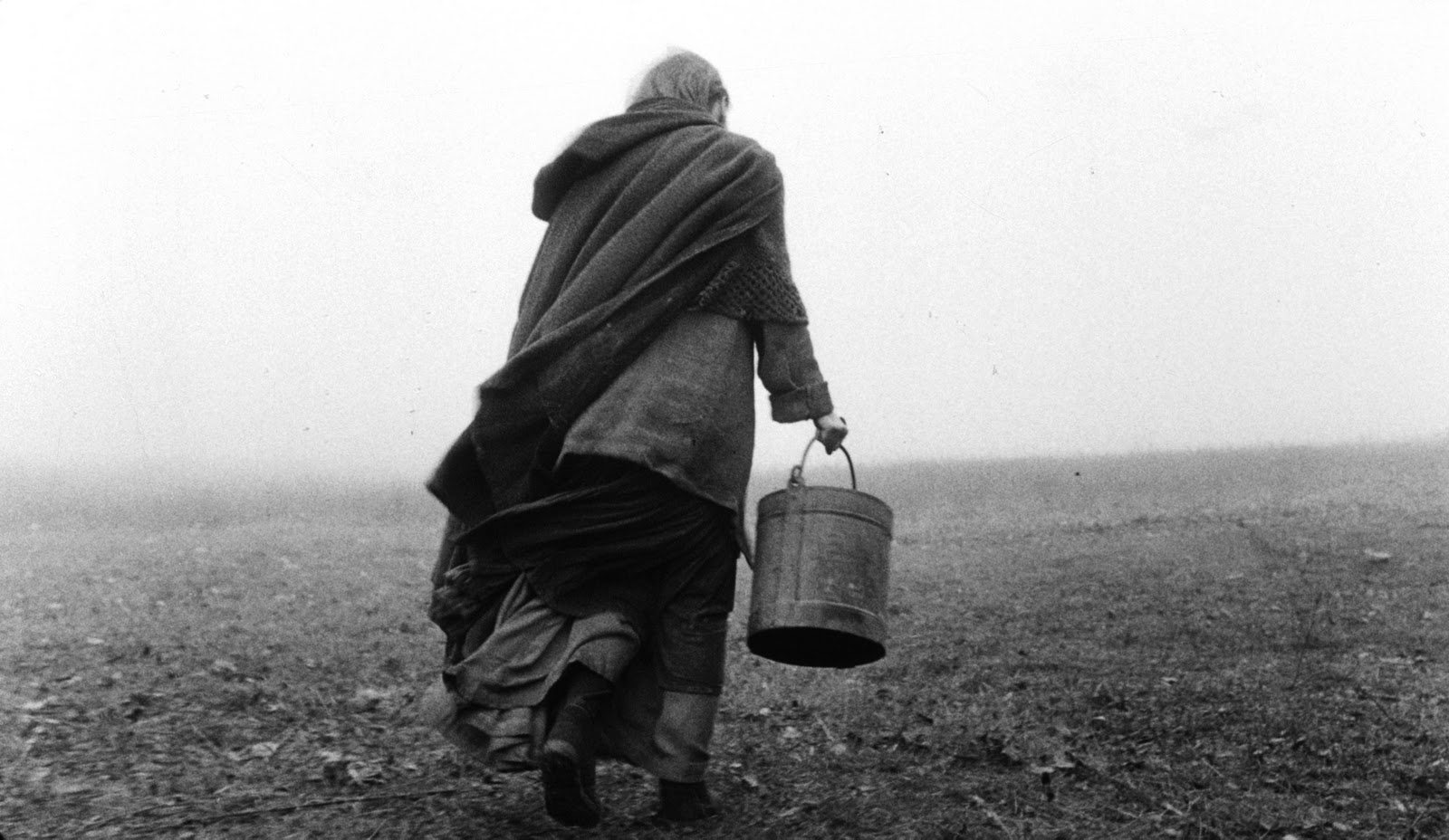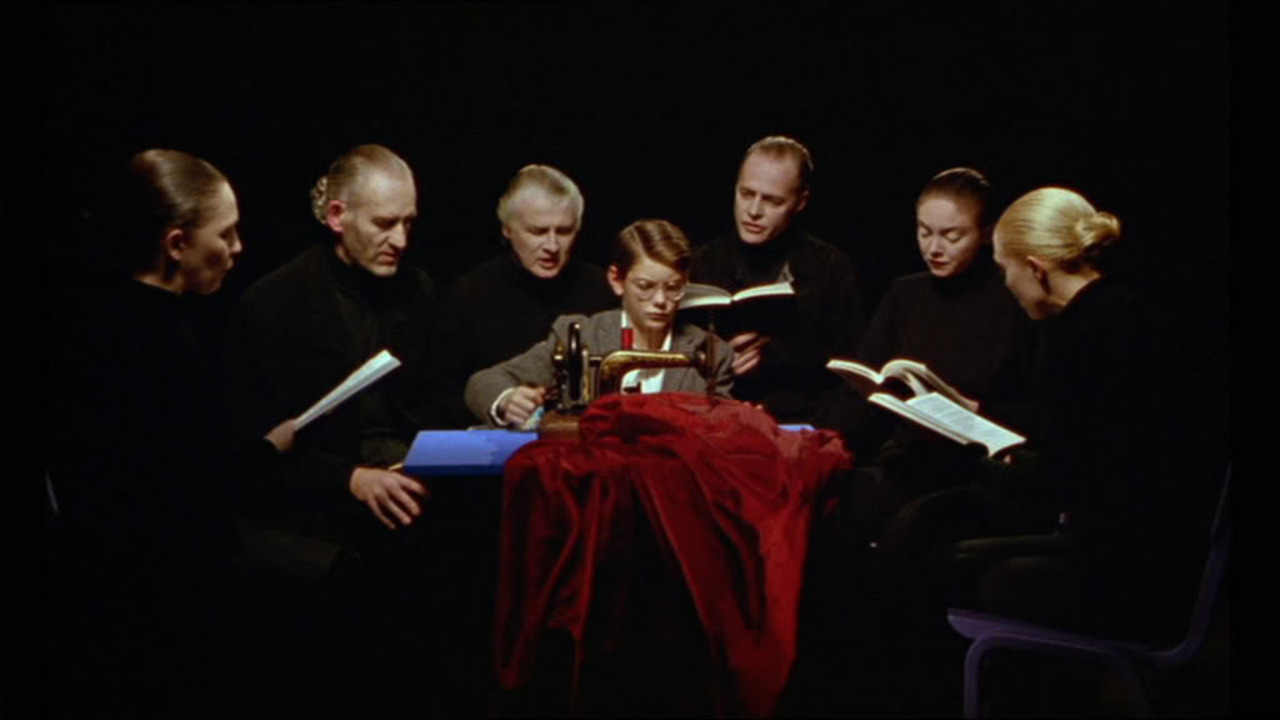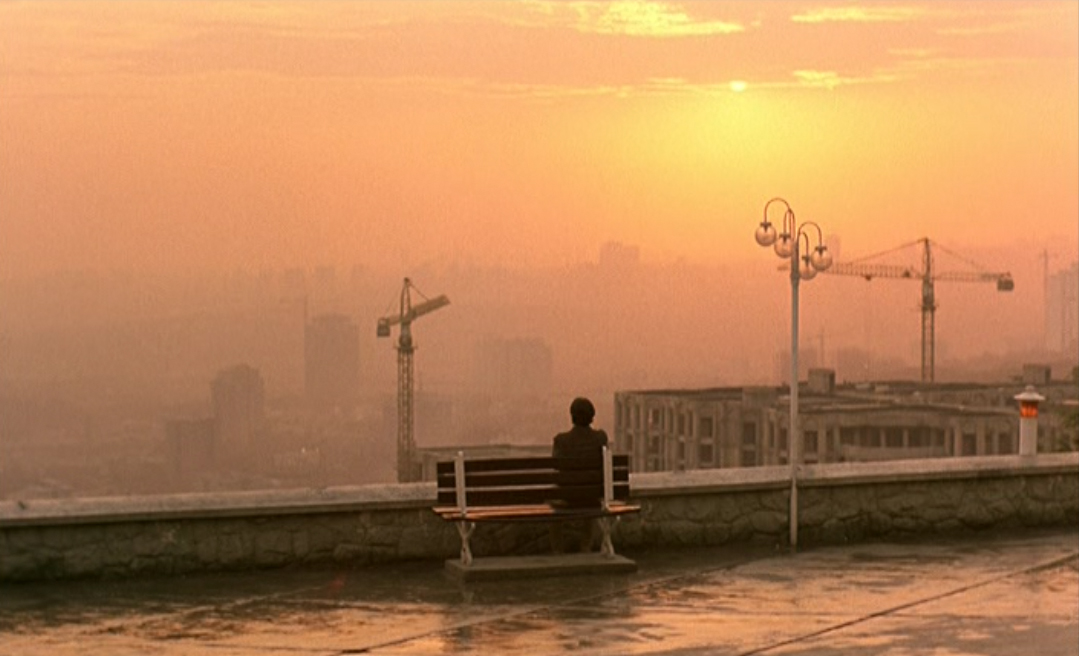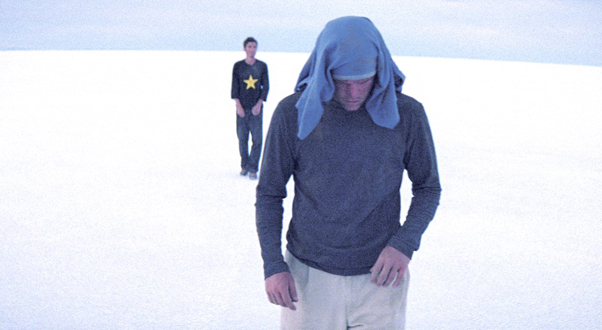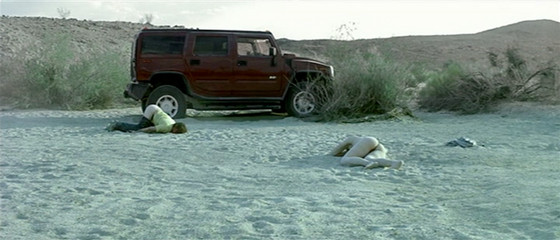Ambient cinema has its roots in the modernist cinema of artists such as Michelangelo Antonioni, Andrei Tarkovsky or Yasujiro Ozu. This kind of filmmaking had its revival in the work of many postmodern authors at the end of the century. This may have come from the lectures of Ihab Hassan’s on postmodern fiction. His vision of the literature of silence was an answer to the dying breed of modernism, new blood at the end of an exhausting century.
There came the need for a brand new narrative: dehumanised, deconstructed, but not negative. Rather, this new narrative is affirmative as it’s a fight with rationalism and a heroic approach to individualism. This silence is a method to derealize the rational world, with the end product being anti-art. No transcendence, no enlightenment – only nonsense, brutal boredom and the endless void.
We can find a huge similarity between works from authors like Beckett or Sartre, who were picked by Hassan as representative of this type of writing, and the ambient cinema of Jarmusch, Van Sant or the Romanian New Wave. So let’s explore the ambient narratives in the works of some of the finest postmodern directors.
1. Slacker (1991, Richard Linklater)
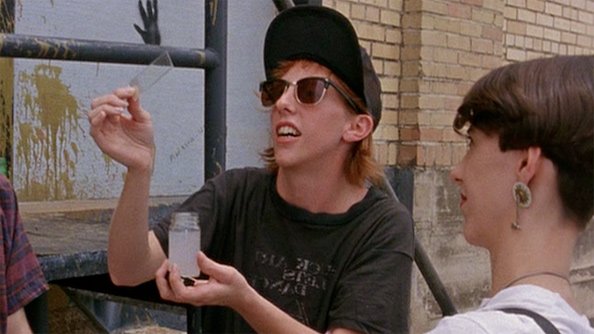
Linklater’s cult film is not only a portrait of young Americans from the famous Generation X, but also a strong artistic manifesto. The director decided that there would be no main characters nor a regular plot.
Without these elements, we instead get constantly changing microstories taking place on the streets, in restaurants and pubs. The scrap story shifts from one character to another as the camera follows random people. Characters filmed at first in the background become the point of interest for a moment and then just disappear into their lazy existence.
It’s nothing like a typical ensemble film in the style of “Short-Cuts” or “Magnolia” where we have tension and drama spread across many subplots. “Slacker” has no tension and drama. Linklater films the small city in it’s typical day in a 1:1 scale so that the wall between real life and film is transparent.
The American director turns totally average characters into poetic figures in the same way James Joyce did with the people of Dublin in the modernist masterpiece “Ulysses”. A simple story, an unimportant moment, an everyman – they can all become something unique in the eyes of the modernist artist. Linklater seems to know that very well.
2. Wittgenstein (1993, Derek Jarman)
The famous philosopher’s biopic is not merely a story about how a great mind is born – it’s also a meditation on loneliness and alienation. We watch Ludwig Wittgenstein in various stages of his life, but no matter whether it’s his adolescence or middle-age, he is always living with the aura of an exile.
As a specialist in homoerotic cinema, Jarman especially concentrates on Wittgensteins complicated sexual identity. This doesn’t mean it’s a queer movie; it’s more of a universal portrait of the tormented soul, which everyone who was once an outsider can relate to.
It was possible to make such an introverted story because of the pure minimalist form Jarman has chosen. Nearly theatrical scenes with long period of dialogue turn this into a hypnotic experience. The whole time the action is balanced between reality and dreamlike sequences. Wittgenstein even talks to a dwarf alien!
The aesthetic form of Jarman’s work, which was shot with pure black scenery with a small amount of decorations, was drawn heavily upon as an inspiration for Von Trier’s “Dogville”. And let’s not forget that this was Jarman’s last work before the one color static of “Blue” – the director’s swan song.
3. Taste Of Cherry (1997, Abbas Kiorastami)
Now we come to a representative of the Iranian New Wave. The plot is as simple as it gets: it’s about a mysterious man, Mr. Badii, who decides to bury himself alive. For the whole film we are watching his attempts to finalize this idea. You can’t get more nihilistic, can you? There is much of the absurdist theatre of Samuel Beckett in here.
Similar to his most well-known masterpiece, “Waiting For Godot”, the story in “Taste Of Cherry” is mostly about waiting. Kiorastami’s minimalist work utilizes long shots and dizzy camera work. This, combined with repeatable and boring scenery, creates a visual maze.
We don’t know why the protagonist wants to die and we don’t have a clue about what happened before. We just observe his slow, oncoming suicide, the Teheran dessert and the lonely man trying to chase death, trying to find people who can help him end his life. The paradox is that it’s not really as one-track-minded a movie as it seems to be on first sight.
This absurdist story builds many layers of metaphysical thought that can be seen between the lines. Small talk with someone Mr. Badii tries to convince to help him can turn to a conversation about life and death as Kiorastami blurs the line between harsh reality and philosophic tract. This is a perfect example of how an ambient film can shift from sleepy to dramatic.
4. Gerry (2002, Gus Van Sant)
Van Sant’s death trilogy, consisting of the Palm d’Or winner “Elephant”, the Kurt Cobain-inspired “Last Days” and “Gerry”, is a perfect example of raw ambient cinema. “Gerry” features a minimalist cast and was created in the overwhelming surroundings of the desert. There is something hypnotic in the endless horizon of sand which inspires directors to film there.
Unlike films set in forest locations – full of primal “dionysian” vitality – the deserts raw landscapes evoke emptiness and solitude. Therefore, it’s a perfect place for lonely characters to introspectively look for their true selves. In Van Sant’s film, the beautiful images of still oceans of sand contrast with the human anxiety and nervous behaviour of the characters.
We don’t know anything about the two men who share the same name: Gerry. Their trip has some elements of destiny, but when they get lost in the wilderness, everything loses sense. Van Sant doesn’t even try to tell us any story. His goal is to redecorate the traditional Hollywood cinema full of adventure and simple emotions.
The movie lacks nearly every film element except the soul-draining cinematography. “Gerry” can consume the viewers senses and leave them with an empty hole. It doesn’t tell us anything, but it’s a marvelous spectacle.
5. Twentynine Palms (2003, Bruno Dumont)
In “Twentynine Palms”, Dumont shows himself as a revivalist of Michelangelo Antonioni’s minimalist melodrama, focusing on a man and a woman, their complicated relationship and the big silence between them. As Antonioni did in “L’Aventurra”, Dumont puts his young couple David and Katia in the story of a vacation that turns into a life-changing experience. There isn’t much dialogue here, but the tension is heavy as in a good thriller.
Dumont precisely deconstructs film genres that make use of suspense and reconstructs them in this delusional love story. Once again, the desert is one of the main characters, as the hot climate mirrors with David and Katia’s worst internal demons. The couple’s toxic relationship is based on sexual urges and painful misunderstandings.
It’s such different movie than the Tokyo based “Lost In Translation”, where Coppola spoke about loneliness in a relationship but in a quasi-romantic way – without sexual passion, but with subtleness and compassion. In Dumont’s picture, there is only a big heat and the dark void. A truly brutal minimalist piece.
